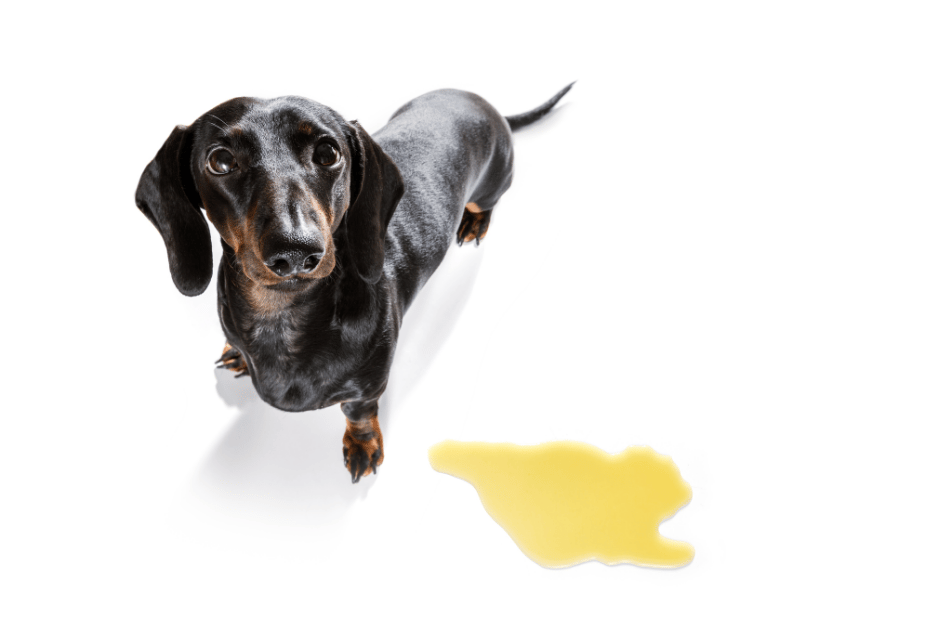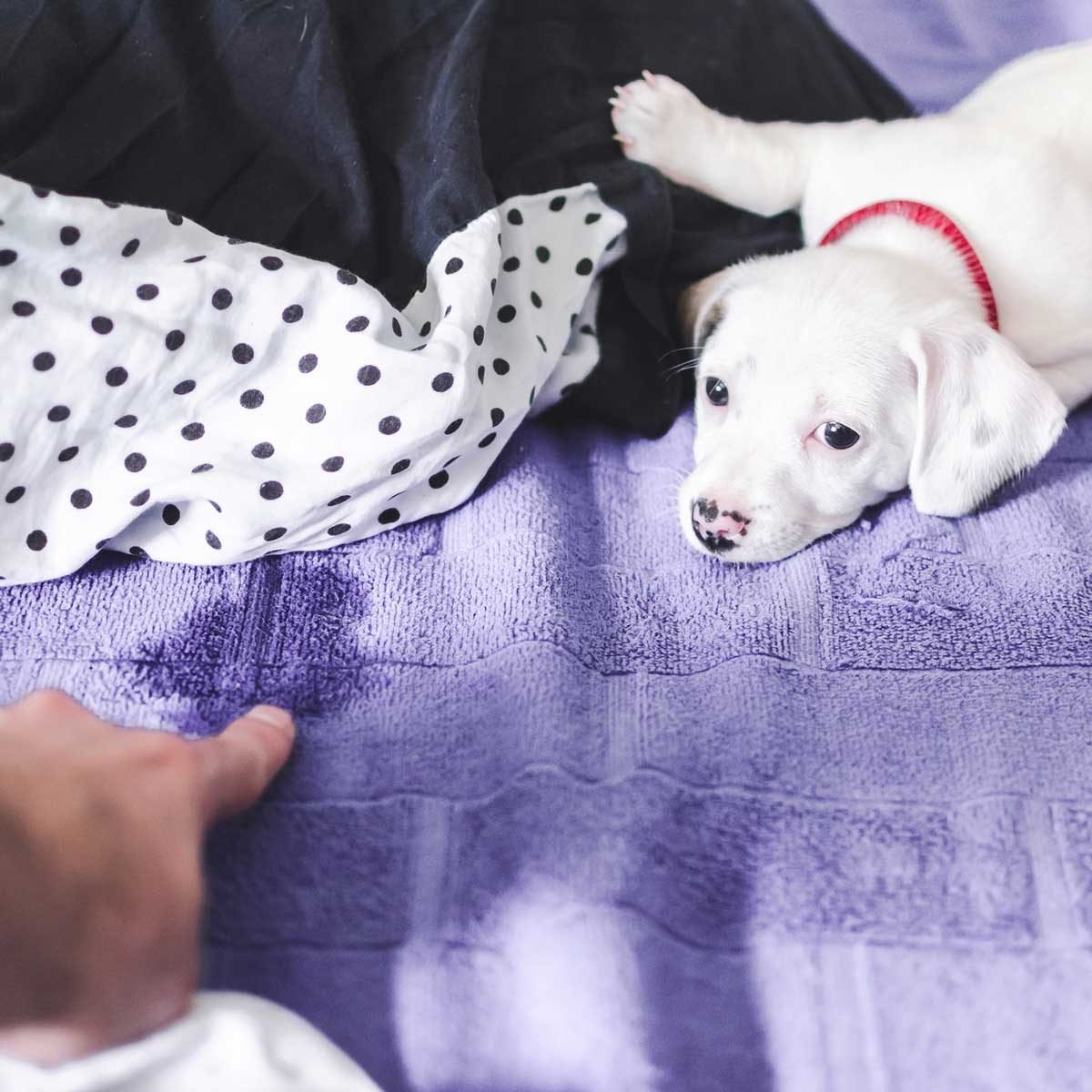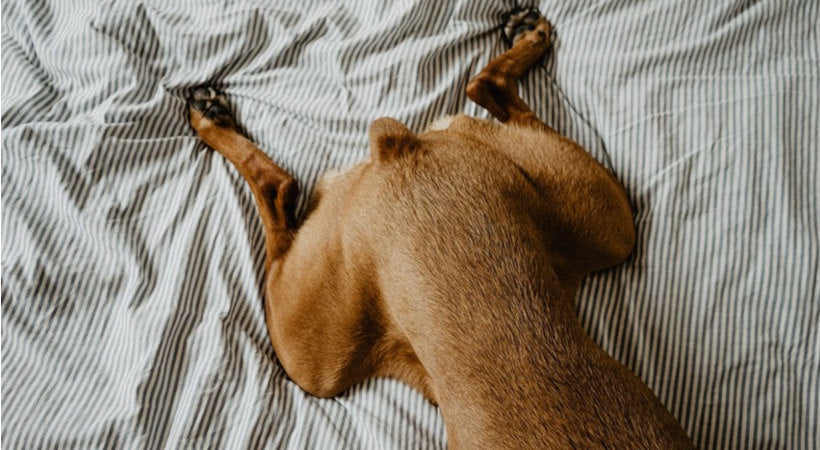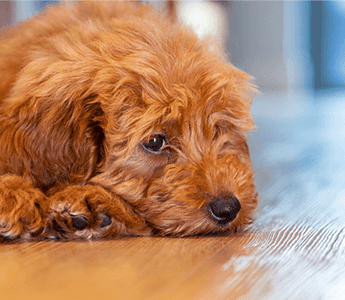Have you ever walked into your dog’s room only to find her bed wet again? It’s frustrating, confusing, and maybe even a little upsetting.
You wonder, “Why does my dog pee on her bed? ” This behavior can feel like a mystery, especially when your furry friend seems otherwise happy and healthy. But understanding the reasons behind it can help you solve the problem faster and keep your home clean.
You’ll discover the common causes and simple solutions to stop your dog from peeing where she shouldn’t. Keep reading—your dog’s comfort and your peace of mind depend on it.

Credit: rockykanaka.com
Common Causes Of Bed Wetting
Bed wetting in dogs can be confusing and frustrating for pet owners. Understanding the common causes helps in addressing this issue effectively. Dogs may urinate on their bed for several reasons. These reasons fall into three main categories: medical issues, behavioral factors, and environmental triggers.
Medical Issues
Health problems are a common cause of bed wetting. Urinary tract infections can make dogs urinate frequently and uncontrollably. Bladder stones or kidney problems may cause discomfort and accidents. Older dogs might suffer from incontinence due to weakened muscles. Hormonal imbalances can also reduce bladder control. A visit to the vet helps diagnose these issues quickly.
Behavioral Factors
Stress and anxiety often lead to bed wetting in dogs. Changes in routine or environment can upset them. Separation anxiety may cause accidents when left alone. Some dogs mark their territory by urinating on their bed. Lack of proper house training or confusion about where to go can also cause this behavior. Patience and training can improve these habits.
Environmental Triggers
The surroundings affect a dog’s bathroom habits. A dirty or wet bed may confuse your dog. Limited access to outdoor spaces can lead to accidents indoors. Loud noises or new pets in the house can stress a dog. Temperature changes might make dogs uncomfortable and restless. Keeping a clean, calm, and accessible environment helps reduce bed wetting.
Health Problems To Watch For
If your dog suddenly starts peeing on her bed, it’s important to consider health problems that might be causing this behavior. Dogs don’t usually choose to soil their sleeping area without reason. Sometimes, underlying medical issues can make it difficult for your dog to control her bladder or feel comfortable staying dry.
Urinary Tract Infections
Urinary tract infections (UTIs) are a common cause of unexpected urination in dogs. They can cause burning, discomfort, and frequent urges to pee, leading your dog to leak urine in unusual places like her bed.
If your dog seems restless, licks her genital area often, or has a strong odor to her urine, a UTI might be the culprit. A simple vet test can confirm this and antibiotics usually clear up the infection quickly.
Bladder Stones
Bladder stones are mineral buildups that irritate the bladder lining. These can cause pain and difficulty urinating, which might make your dog avoid the usual bathroom spots and instead pee where she feels safest—her bed.
Watch for signs like blood in the urine, frequent attempts to urinate, or signs of discomfort. Bladder stones need veterinary attention, and sometimes surgery, to remove them and prevent recurrence.
Hormonal Imbalances
Hormonal changes, especially in older female dogs, can affect bladder control. Conditions like spay incontinence happen when estrogen levels drop, weakening the muscles that hold urine in.
This often results in small leaks, particularly when your dog is resting or sleeping. If you notice this, ask your vet about hormone therapy or other treatments that can help manage the condition effectively.
Behavioral Reasons Behind Bed Peeing
Understanding why a dog pees on her bed involves exploring her behavior. Many times, this action is not about physical health but linked to how your dog feels or what she has learned. Behavioral reasons often cause bed wetting, signaling a deeper issue in her environment or routine.
Anxiety And Stress
Dogs can feel anxious for many reasons. Changes in routine, loud noises, or new people can stress them out. When stressed, dogs may pee on their bed. It acts as a comfort or a reaction to nervousness. Stress can cause loss of control, leading to accidents in familiar places.
Marking Territory
Dogs mark their space by peeing. It is a natural way to claim an area. Female dogs also mark, especially if they sense other animals nearby. Peeing on the bed can be a way to say, “This is mine.” This behavior is common if the dog feels threatened or insecure.
Lack Of Proper Training
Some dogs never fully learn where to pee. Without clear training, they might see the bed as an okay spot. Puppies especially need consistent guidance to understand boundaries. If a dog is left alone too long, she may forget house rules and wet the bed.
Impact Of Environment And Routine
The environment your dog lives in and her daily routine play a huge role in her behavior, including where she chooses to pee. Changes around her can create stress or confusion, which might lead her to mark her bed. Understanding these factors helps you address the root cause instead of just the symptom.
Changes At Home
Have you recently moved furniture or introduced new pets? Dogs are creatures of habit, and any change can unsettle them. Even small shifts in the home layout might make your dog feel insecure, prompting her to pee on her bed as a way to claim her space.
Think about recent events—did you have guests over, or did someone in the family start working from home? These can disrupt her sense of normalcy and affect her bathroom habits.
Dirty Or Uncomfortable Bedding
Your dog’s bed should be a clean and cozy spot. If it’s dirty or smells like urine, she might avoid her usual bathroom area and instead pee there again, creating a cycle. Check her bedding often and wash it regularly to keep it inviting.
Sometimes, the bedding material itself can cause discomfort or allergies, making her restless and more likely to have accidents. Try switching to a different fabric or style to see if it makes a difference.
Inconsistent Potty Schedules
Irregular bathroom breaks confuse your dog and increase the risk of accidents. If you’re busy or forgetful, your dog might not get enough chances to relieve herself outside. This can lead her to choose the bed as an alternative spot.
Consider setting reminders or establishing a clear potty routine. Dogs thrive on predictability—it helps them know when and where to go.
Effective Cleaning Techniques
Cleaning your dog’s bed after an accident is very important. Proper cleaning removes smells and stains that encourage your dog to pee there again. Using the right methods keeps the bed fresh and comfortable. It also helps your dog feel safe and clean in her space.
Removing Odors Completely
Odors from dog urine can be strong and hard to remove. Use cold water to rinse the bedding first. Warm water can set the stain and smell. Next, soak the bedding in a mixture of water and white vinegar. Vinegar breaks down urine crystals and neutralizes odors. After soaking, wash the bed with an enzyme cleaner. Enzyme cleaners break down urine molecules fully. Avoid using bleach or harsh chemicals. These can harm your dog’s skin and nose.
Using Pet-safe Cleaners
Choose cleaners made for pets. They are safe and effective on urine stains and smells. Look for products labeled “enzyme-based” or “pet odor remover.” These cleaners help stop your dog from returning to the same spot. Test any cleaner on a small fabric area first. This prevents damage or discoloration. Avoid strong fragrances that might bother your dog.
Preventing Repeat Accidents
After cleaning, keep the bed dry and fresh. Use a waterproof cover to protect the bed. Wash bedding regularly to keep it clean. Place the bed in a quiet, safe area for your dog. Reward your dog for using the bathroom outside. Consider adding a dog potty pad nearby if needed. Consistent cleaning and training reduce accidents over time.
Training Tips To Stop Bed Wetting
Training a dog to stop peeing on her bed takes patience and clear steps. Consistency is key for your dog to learn where to go. Use simple, positive methods to guide her behavior. This section shares practical tips to help train your dog effectively.
Reinforcing Bathroom Habits
Take your dog outside often, especially after meals and naps. Praise her each time she pees outdoors. Clean accidents with an enzyme cleaner to remove odors. This stops her from returning to the same spot. Watch for signs she needs to go, like sniffing or circling.
Positive Reinforcement Strategies
Use treats and gentle praise when your dog pees outside. Avoid punishment as it can cause fear and confusion. Reward good behavior immediately to build a clear connection. Keep training sessions short and fun to hold her attention. Consistent rewards help form lasting habits.
Establishing A Consistent Routine
Set regular times for bathroom breaks, meals, and play. A steady routine reduces accidents and anxiety. Take your dog out first thing in the morning and before bedtime. Keep feeding times fixed to predict bathroom needs. A structured day helps your dog feel secure and learn faster.
When To Consult A Veterinarian
Noticing your dog peeing on her bed can be frustrating and puzzling. Sometimes, it signals a simple behavioral issue, but other times it might point to a health problem that needs immediate attention. Understanding when to consult a veterinarian can save your furry friend discomfort and prevent further complications.
Identifying Serious Symptoms
Is your dog showing signs beyond just peeing on her bed? Watch for symptoms like frequent urination, straining to pee, blood in the urine, or noticeable pain. These could indicate urinary tract infections, bladder stones, or other medical issues requiring prompt care.
Also, changes in appetite, lethargy, or excessive licking of the genital area are red flags. Don’t ignore these signs, even if the bed peeing seems isolated. Early detection can make treatment easier and faster.
Preparing For The Vet Visit
Before heading to the vet, gather as much information as you can. Note when the accidents happen, how often, and any other unusual behaviors. This helps the vet diagnose the problem more accurately.
Bring a fresh sample of your dog’s urine if possible. If collecting it is tricky, don’t stress—your vet can assist. Also, list any medications or supplements your dog is currently taking.
Follow-up Care And Monitoring
After the vet visit, follow all care instructions carefully. This might include giving prescribed medications, changing diet, or adjusting your dog’s routine. Your involvement plays a huge role in recovery.
Keep a close eye on your dog’s behavior and urination habits in the following days. If you notice no improvement or new symptoms, contact your vet again. Staying proactive ensures your dog gets the best care possible.

Credit: www.embassyofpakistanusa.org

Credit: walkinpets.com
Frequently Asked Questions
Why Does My Dog Pee On Her Bed Suddenly?
Sudden bed urination may signal stress, anxiety, or a medical issue. It’s important to consult a vet for diagnosis. Behavioral changes or new environments can also trigger this behavior.
Can Health Problems Cause My Dog To Pee On Bed?
Yes, urinary tract infections, bladder stones, or incontinence can cause bed urination. A vet visit is crucial to rule out or treat medical conditions promptly.
How Can I Stop My Dog From Peeing On Her Bed?
Clean soiled areas thoroughly and use enzymatic cleaners. Provide regular bathroom breaks, and create a stress-free environment. Training and vet advice can effectively address this issue.
Is Anxiety A Reason My Dog Urinates On Her Bed?
Anxiety or stress can cause dogs to urinate indoors, including beds. Identifying triggers and providing comfort or behavior therapy helps reduce anxiety-related accidents.
Conclusion
Understanding why your dog pees on her bed is crucial. It helps solve the issue quickly. Consider health, stress, or behavioral reasons. Consult a vet if needed. Create a calm environment for her. Training can also improve behavior. Patience is key.
Dogs need time to adjust. Avoid punishment, as it may increase anxiety. Focus on positive reinforcement. Small changes can make a big difference. Your dog will feel more comfortable. With time, the problem should resolve. Happy dog, happy home.

